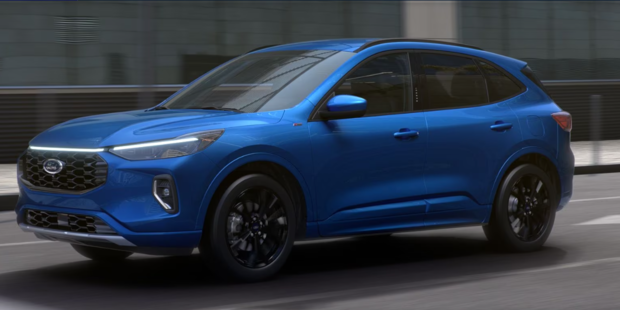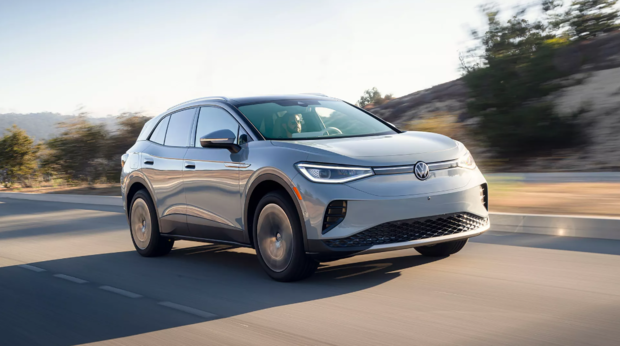When is an SUV not an SUV? Automakers fear 2023 EV tax credits may confuse car buyers
When is an SUV not an SUV? It depends on who you’re asking — and it’s a question consumers interested in the newly expanded clean vehicle tax credit should look at carefully, since it’s the IRS that decides whether or not the cars they just bought will qualify. The answer may not be as simple as it seems.
The Inflation Reduction Act, the tax, climate and health care law enacted last year, includes a key tax credit for new (up to $7,500) and used (up to $4,000) clean vehicle purchases. To meet the requirements for the tax credit, vehicles in service after Dec. 31, 2022 must meet MSRP limits based on body type and weight and must undergo final assembly in North America. The Treasury Department is set to release additional guidelines on battery source requirements in March, but for now, it’s the vehicle classification requirement that’s making some car companies uneasy.
Cadillac website
The potential confusion for consumers begins with how vehicles are classified. For example, Cadillac’s new Lyriq EV qualifies for the clean vehicle tax credit under IRS guidelines — but only as a car, not as an SUV. Cadillac markets the Lyriq as an SUV, but under its current classification as a car, and with an MSRP just over $62,000, the vehicle is cut out of the key tax credit. That’s because cars and other vehicles with an MSRP of up to $55,000 qualify for the credit. The Lyriq would be eligible for a tax credit at its sticker price only if it were classified as a clean-energy SUV, pickup truck or van, which tops out at an MSRP of $80,000.
A Treasury official told CBS News that the agency did not create new vehicle classification guidelines but instead used current Corporate Average Fuel Economy (CAFE) standards to determine vehicle types and their eligibility for the tax credit. The official stressed that car makers are already aware of how vehicles are classified under government guidelines.
That explanation may confuse potential electric car consumers, but a Treasury official stressed government regulations offer “clear criteria” for outlining differences between SUVs and cars. According to Kelly Blue Book, some vehicles may not have the right measurements, angles, drivetrain (ex; all-wheel-drive), or minimum weight to meet the government guidelines to qualify as an SUV for the tax credit. The Lyriq doesn’t meet the weight requirement, which is 6,000 pounds, nor does it have all-wheel-drive.
And some automakers are complaining that different departments in the federal government aren’t listing vehicles in a consistent manner. For instance, GM, the parent company of Cadillac, is pushing back on the Lyriq’s classification and has asked the Treasury Department to reconsider its stance.
“[The] Cadillac Lyriq is a U.S., union-built electric vehicle that is currently ineligible for the tax credit, a GM spokesperson told CBS News in a statement. “The tax credit for electric SUVs has a MSRP cap at [$80,000]. However, while the Cadillac Lyriq is listed as an SUV by the Environmental Protection Agency and Department of Energy on fueleconomy.gov, the Department of Treasury, which administers the tax credit, currently classifies Lyriq as well as a number of vehicles manufactured by other car makers as passenger cars,” the statement said.
GM isn’t the only company upset about the tax credit classification. Tesla CEO Elon Musk has also expressed his discontent in a tweet last week.
Tesla’s five-seat version of the Model Y did not qualify for the SUV MSRP cap because it’s classified as a passenger car on the IRS website. But the seven-seat Model Y does meet the $80,000 MSRP qualification. However, the baseline price for the Model Y is now just over $52,000 after Tesla cut prices of some of its vehicles this month, which would bring it under the $55,000 limit for passenger cars. An IRS fact sheet notes that vehicle descriptions on window price stickers or those on fueleconomy.gov may not line up with the vehicle classification for the tax credit.
Ford.com
Other carmakers, like Volkswagen and Ford, also have vehicles marketed as SUVs that qualify for the tax credit, but the IRS classifies them as cars. Unlike the Lyriq, however, the Ford Escape plug-in hybrid and Volkswagen ID.4, both have starting prices below the $55,000 MSRP limit for passenger cars, so they will qualify for the tax credit anyway.
VW.com
But even if the vehicle is eligible, the car buyer may not be. The IRS has set income requirements for both new and used EV vehicle purchases, allowing couples with an annual joint income of $300,000 to claim the credit, as well as individuals making up to $150,000 and heads of households with a maximum income of $225,000.
There are lower income requirements for used vehicles: a $150,000 maximum adjusted gross income for married couples, $112,500 for heads of households and $75,000 for all others.
An IRS web page notes that more qualified clean vehicles will continue to be added on an ongoing basis.






